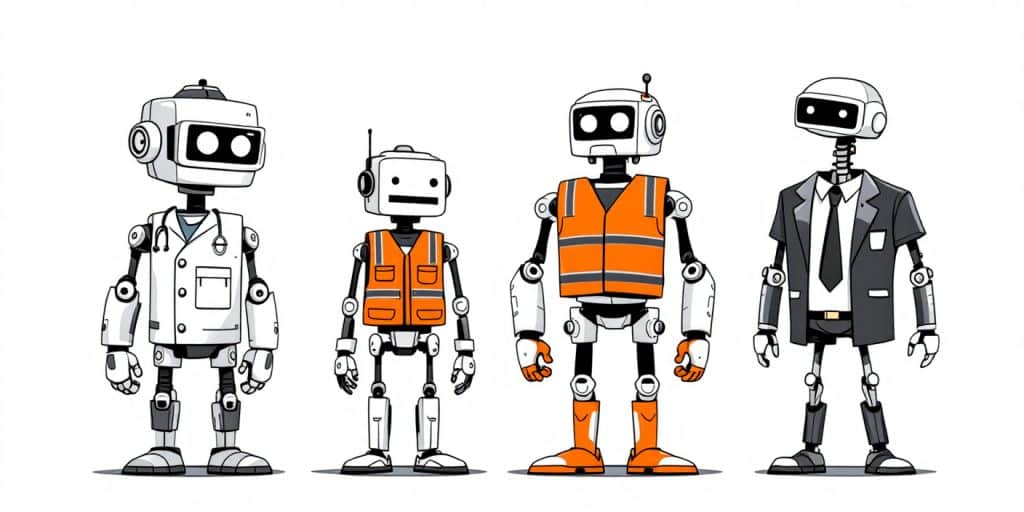You’ve probably talked to one before — maybe while trying to change a flight late at night or track a package on your phone. You typed a quick message, half expecting to wait, and the reply came back almost instantly. No agent, no queue. That was an AI chatbot quietly doing its job.
They’ve quietly spread across almost every corner of the internet — answering questions, checking bookings, helping people find what they need. In customer service, these bots pick up the slack when staff are busy or the office lights are out. It’s quiet, invisible work, but it keeps things moving. A few seconds shaved off each chat might not sound like much until you add it up over a week — suddenly that’s hours saved, tickets cleared, and fewer customers left waiting. For a company, that consistency matters a lot.
How Does AI Chatbot Technology Work?
The technology behind chatbots is a mix of natural language processing (NLP) and machine learning. NLP helps a chatbot catch the small things — tone, phrasing, the hint of impatience in a message. It can tell when someone’s just curious and when they’re about to give up. The machine learning side handles the long game. Every chat is a lesson, a little bit of training data that shapes how the bot answers next time – and answers better.
The old versions were stiff — they worked only when you used the right words. The new ones are flexible. Say you type, “My package’s gone missing again.” The chatbot figures out what you’re trying to do, checks tracking info, and tells you where it is. No form-filling, no waiting.
Where Are AI Chatbots Used?
AI chatbots appear in nearly every industry. Some face customers; others quietly support internal work.
AI Customer Service Chatbots
These are the ones most people come across first. You ask a question about a flight or a phone bill, and a chat window pops up with the answer before you’ve even found the support number. AI customer service chatbots handle the small stuff — checking bookings, walking users through setup steps, or resetting passwords — and they do it around the clock. Airlines lean on them for check-in issues, while telecom companies use them to untangle account problems long before a person gets involved.
E-commerce and Retail
Online stores use bots to suggest products, confirm stock, or track deliveries. H&M’s style assistant and Sephora’s shopping helper both make online buying feel a little more personal.
Healthcare
Typical tasks for a hospital’s conversational bot are to help visitors book visits, collect patient details, and send medication reminders.
Education
Universities and learning platforms successfully use chatbots to answer routine student questions or provide after-hours support.
Inside Companies
Many firms now deploy AI chatbots for business operations — digital assistants that log IT tickets, help staff request time off, or find HR policies. It’s a small automation, but it saves hours of back-and-forth each week.
The Benefits and Challenges of AI Chatbots
The benefits of AI in business become obvious once a chatbot goes live.
- Faster replies keep customers happy.
- Fewer repetitive tasks lower costs.
- Bots never clock out — they work across time zones.
Over time, they learn and fine-tune their tone and accuracy.
There are limits, though. Chatbots can misread complex language, depend heavily on good data, and still need human backup for sensitive cases. Most companies blend automation with live agents so service stays reliable.
| Type of Bot | Learns From Data | Handles Complex Tasks | Works 24/7 | Needs Human Backup |
|---|---|---|---|---|
| Rule-Based Chatbot | No | No | Yes | Often |
| AI Chatbot | Yes | Sometimes | Yes | Occasionally |
What’s Next for AI Chatbots in Business?
Each new wave of AI chatbots feels a little smarter than the last. These tools no longer sit on the edge of operations. They’re now woven into the core of business automation, connecting sales, support, and logistics in ways that used to take several different systems.
The smartest approach is still to start small and go slow. Analyze your needs, choose one repetitive task, test how well the chatbot handles it, and refine the process. As those experiments succeed, they build momentum. Over time, that steady progress turns AI chatbots for business operations into something ordinary — another quiet, dependable part of how modern companies get things done.

